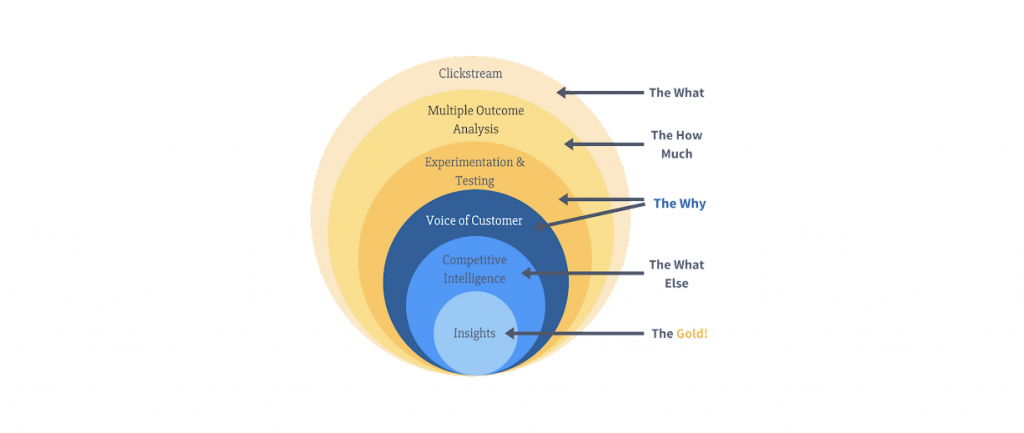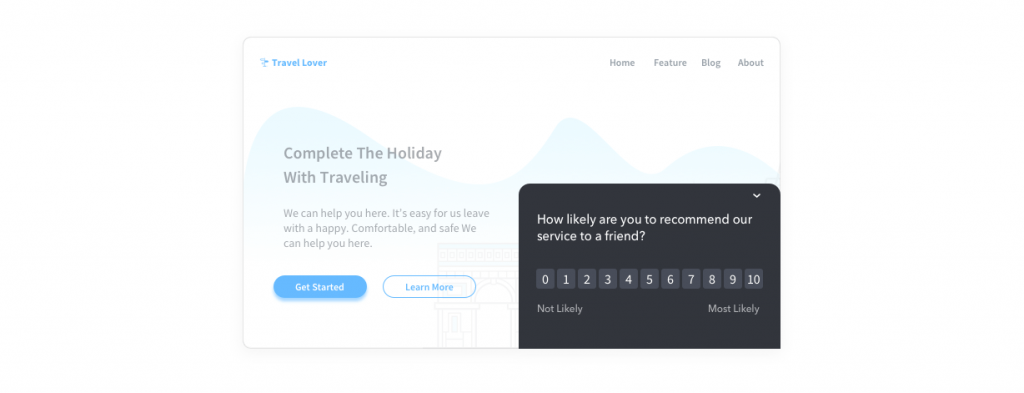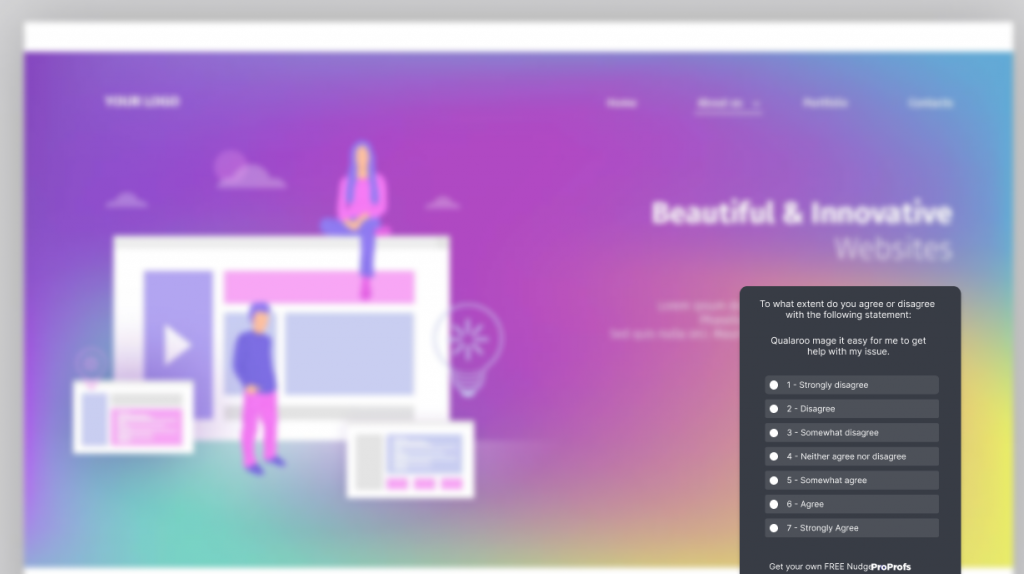Let’s be honest: NPS has been the go-to metric for customer experience for years. But as a customer experience pro who’s navigated the trenches of surveys and feedback for over a decade, I’ve realized it’s not a one-size-fits-all solution.
NPS is great for a quick pulse check, but it often lacks depth.
So, here is a list of some of the most powerful NPS alternatives that have helped me truly understand customer sentiment and drive meaningful improvements.Let’s check these smart options, along with how to use them, their benefits, and a pro tip.
What Is NPS?
Net Promoter Score (NPS) is a metric used to gauge customer loyalty and satisfaction based on responses to a single question: “How likely are you to recommend our product/service to a friend or colleague?” Respondents answer on a scale of 0 to 10 and are categorized as follows:
- Promoters (score 9-10): Loyal enthusiasts likely to recommend.
- Passives (score 7-8): Satisfied but unenthusiastic customers.
- Detractors (score 0-6): Unhappy customers who could damage the brand.
NPS is calculated by subtracting the percentage of Detractors from the percentage of Promoters. Scores range from -100 to +100.
For instance, Apple’s NPS in 2022 was 72, indicating high customer loyalty. According to Bain & Company, businesses with higher NPS grow at more than twice the rate of their competitors.
Companies like Amazon and Tesla often have high NPS scores, reflecting strong customer loyalty and positive word-of-mouth. NPS is a valuable tool for identifying customer satisfaction trends and areas for improvement.
Top 8 NPS Alternatives
1.Customer Effort Score (CES)

The Customer Effort Score (CES) evaluates how easy it is for customers to interact with your company and resolve their issues. This metric focuses on minimizing the effort customers require during their interactions, recognizing that simpler, hassle-free experiences lead to higher satisfaction and loyalty.
Normally, CES is measured through a survey asking customers to rate the ease of their interaction on a scale from “Very Difficult” to “Very Easy.” By identifying and reducing friction points, companies can enhance the customer experience, improve retention, and foster greater loyalty.
How to Use Customer Effort Score (CES):
- Send a survey to customers immediately after their interaction with your customer service team.
- Include a question like, “How easy was it to resolve your issue today?” with response options ranging from “Very Difficult” to “Very Easy.”
- Analyze the responses to identify common issues that increase customer effort.
- Use the feedback to streamline resolution processes, enhance agent training, and update support resources.
- Continuously monitor and refine your processes to ensure a smoother experience for future interactions.
Major Benefits of CES:
- Identifies specific pain points in the customer journey that require attention.
- Helps prioritize areas for process improvement to enhance overall customer satisfaction.
- Reduces the likelihood of customer frustration, leading to increased loyalty.
- Provides actionable insights that can directly impact the efficiency of customer service operations.
- Enhances the overall customer experience by focusing on ease of interaction and quick resolution.
Pro Tip: Combine CES with open-ended questions to gather more detailed feedback about specific pain points and suggestions for improvement.
Also Read: Customer Delight: Create WOW Moments Across the Customer Journey
2. Customer Satisfaction Score (CSAT)
The Customer Satisfaction Score (CSAT) measures customers’ satisfaction with a company’s products or services. This metric is usually captured through a simple survey asking customers to rate their satisfaction on a scale from 1 to 5, with 1 being “Very Dissatisfied” and 5 being “Very Satisfied.” CSAT surveys are short and straightforward, making them easy to deploy and analyze.

By regularly collecting CSAT data, businesses can track changes in customer satisfaction over time and identify specific areas needing improvement, ensuring that customer expectations are met consistently.
How to Use Customer Satisfaction Score (CSAT):
- Integrate short satisfaction surveys at various customer touchpoints, such as after a purchase or a customer service interaction.
- Ask customers, “How satisfied are you with your experience?” on a scale from 1 to 5.
- Collect and analyze the responses to identify trends and pinpoint areas where satisfaction is low.
- Use the insights to make targeted improvements, such as enhancing product features, refining the customer service process, or improving overall customer experience.
- Continuously monitor and update your CSAT surveys to capture evolving customer expectations.
Major Benefits of CSAT:
- Provides a clear and direct measure of customer happiness, allowing for easy tracking.
- Helps identify specific areas where customer satisfaction can be improved.
- Enables businesses to monitor changes in customer sentiment over time.
- Offers valuable feedback that can be used to enhance product development and service quality.
- Facilitates quick and targeted responses to issues, improving customer relationships and loyalty.
Pro Tip: Follow up with customers who provide low scores to understand their issues in detail and take corrective action promptly.
Also Read: 8 Best Customer Insight Tools to Better Understand Your Audience | Blog
3. Voice of Customer (VoC)

Voice of Customer (VoC) is a comprehensive program that captures and analyzes customers’ expectations, preferences, and aversions. It involves gathering feedback from multiple channels such as surveys, social media, direct feedback, and customer interviews.
VoC is one of the better alternatives to NPS because it provides a holistic view of customer sentiments and experiences, allowing companies to tailor their products, services, and interactions to meet customer needs better. By systematically listening to and analyzing customer feedback, businesses can identify trends, uncover hidden issues, and discover opportunities for innovation and improvement.
How to Use Voice of Customer (VoC):
- To gather data continuously, use various feedback channels, such as online surveys, social media monitoring, customer interviews, and focus groups.
- Aggregate the collected data for comprehensive analysis using advanced analytics tools.
- Identify patterns and trends in the feedback to uncover insights.
- Share insights across the organization to inform decision-making and drive customer-centric strategies.
- Regularly review and update your VoC program to adapt to changing customer needs and market conditions.
Major Benefits of VoC:
- Provides a holistic view of customer sentiments and preferences, enabling more informed decisions.
- Enhances understanding of customer needs and expectations, leading to better products and services.
- Identifies emerging trends and issues, allowing for proactive management and improvement.
- Informs strategic decisions and innovation efforts based on real customer feedback.
- Improves overall customer satisfaction and loyalty by ensuring that customer voices are heard and acted upon.
Pro Tip: Regularly review and update your VoC program to stay aligned with evolving customer expectations and market trends.
FREE. All Features. FOREVER!
Try our Forever FREE account with all premium features!
4. “Have you ever recommended us” Survey

The “Have you ever recommended us” survey assesses customer loyalty by asking if customers have ever recommended your product or service to others. This question provides insights into customer advocacy and satisfaction.
A high number of affirmative responses indicates strong customer loyalty and effective word-of-mouth marketing, while negative responses can highlight areas that need improvement. Understanding why customers choose to recommend or not recommend your brand helps tailor strategies to enhance customer experience and loyalty.
How to Use “Have you ever recommended us” Survey:
- Periodically send this survey to your customer base through email or within your app/website.
- Ask the simple question, “Have you ever recommended our product/service to anyone?” with a “Yes” or “No” response option.
- For those who answer “Yes,” follow up with questions about what they like most about your product/service.
- For those who answer “No,” ask for feedback on what could be improved.
- Analyze the responses to identify trends and take action to enhance customer experience and loyalty.
Major Benefits of the “Have you ever recommended us” Survey:
- Provides direct insights into customer loyalty and advocacy.
- Helps measure the effectiveness of word-of-mouth marketing efforts.
- Identifies specific areas where customer experience can be improved.
- Encourages customer engagement and feedback, fostering a sense of community.
- Drives strategic improvements by understanding what motivates customers to recommend your brand.
Pro Tip: Follow up with customers who say “Yes” to understand what makes them advocates and leverage these insights to improve customer experience and marketing strategies.
5. Client Satisfaction Survey for Vendors

The client satisfaction survey for vendors evaluates how satisfied clients are with their vendors’ performance. This survey focuses on various aspects, such as the quality of products or services provided, timeliness, communication, and overall experience.
It helps businesses understand how well their vendors are meeting expectations and where improvements are needed. By regularly assessing vendor performance, companies can ensure that their supply chain operates smoothly and that their end customers receive high-quality products and services.
How to Use Client Satisfaction Survey for Vendors:
- Distribute the survey to clients after project completion or at regular intervals.
- Ask questions about the quality of the product or service, adherence to deadlines, communication effectiveness, and overall satisfaction.
- Use a scale (e.g., 1 to 5) for quantitative responses and include open-ended questions for qualitative feedback.
- Analyze the survey results to identify strengths and areas for improvement in vendor performance.
- Share feedback with vendors to encourage continuous improvement and maintain high standards.
Major Benefits of Client Satisfaction Survey for Vendors:
- Helps maintain high standards of vendor performance by providing regular feedback.
- Identifies areas for improvement in the supply chain, enhancing overall efficiency.
- Ensures the consistent delivery of high-quality products and services to end customers.
- Strengthens vendor relationships by fostering open communication and collaboration.
- Supports long-term improvement and innovation within the vendor network.
Pro Tip: Use these surveys to establish benchmarks and track performance trends over time, facilitating long-term improvements in vendor relationships.
6. Customer Churn

Customer churn measures the rate at which customers stop doing business with your company. It is a critical metric for understanding customer retention and identifying factors that lead to customer attrition.
It is one of the most popular NPS score alternatives because by analyzing customer churn data, companies can uncover patterns and reasons behind why customers leave, allowing them to address these issues proactively. Tracking customer churn helps in developing strategies to retain existing customers, improving overall customer lifetime value and business stability.
How to Use Customer Churn:
- Analyze customer data to identify churn patterns, such as demographic trends, usage behaviors, or common reasons for leaving.
- Implement surveys or interviews with churned customers to gain deeper insights into their reasons for leaving.
- Develop strategies to address these issues, such as improving product features, enhancing customer service, or offering retention incentives.
- Regularly monitor churn rates and adjust your strategies as needed to keep retention rates high.
- Use predictive analytics to anticipate potential churn and take preemptive action.
Major Benefits of Customer Churn Metric:
- Identifies reasons for customer attrition, enabling targeted interventions.
- Helps in developing effective strategies to improve customer retention.
- Enhances overall customer lifetime value by reducing churn.
- Provides insights into customer behavior and preferences, informing business strategies.
- Supports business stability and growth by maintaining a loyal customer base.
Pro Tip: Implement a churn prediction model using machine learning to proactively address potential issues before customers decide to leave, enhancing your retention efforts.
Also Read: 50+ Employee Retention Survey Questions to Control Attrition
7. Help Desk Survey

Help desk surveys measure customer satisfaction with help desk interactions, focusing on aspects such as resolution effectiveness, response time, and the overall support experience. These surveys help companies understand how well their support teams are performing and where improvements are needed.
By gathering feedback directly after help desk interactions, businesses can quickly identify and address any issues, ensuring that customers receive efficient and effective support.
How to Use Help Desk Survey:
- After a help desk interaction, send a survey to the customer asking about their experience.
- Include questions on resolution effectiveness, response time, professionalism of the support agent, and overall satisfaction.
- Use a scale (e.g., 1 to 5) for quantitative responses and open-ended questions for detailed feedback.
- Analyze the results to identify trends and areas for improvement.
- Use the feedback to enhance training programs, streamline support processes, and improve the overall support experience.
Major Benefits of Help Desk Survey:
- Provides direct feedback on the performance of support teams, enabling targeted improvements.
- Identifies specific areas where customer support can be enhanced, leading to higher satisfaction.
- Helps track the effectiveness of resolution processes, ensuring issues are resolved efficiently.
- Improves overall customer experience by addressing common support issues promptly.
- Supports the development of comprehensive training programs for support agents, enhancing service quality.
Pro Tip: Include specific questions about the support agent’s professionalism and knowledge to gain detailed insights into the quality of your customer service team.
Also Read: 15+ Best Help Desk Software Solutions in 2026
FREE. All Features. FOREVER!
Try our Forever FREE account with all premium features!
8. Post-Purchase Survey

Post-purchase surveys gather feedback on the customer’s buying experience, including satisfaction with the product, the purchasing process, and any issues encountered. These surveys are typically sent shortly after purchase and aim to understand how customers feel about their overall experience.
This can be a great alternative of NPS because by collecting this feedback, companies can identify strengths and weaknesses in their sales process, product quality, and customer service, leading to continuous improvements and enhanced customer satisfaction.
How to Use Post-Purchase Survey:
- After a customer makes a purchase, send a survey within a few days to ask about their overall experience.
- Include questions about the ease of the purchasing process, satisfaction with the product, delivery experience, and any issues faced.
- Use a combination of rating scales (e.g., 1 to 5) and open-ended questions to gather both quantitative and qualitative feedback.
- Analyze the responses to identify trends and areas needing improvement.
- Share these insights with relevant teams to drive enhancements in the sales process, product quality, and customer service.
Major Benefits of Post-Purchase Survey:
- Provides detailed insights into the customer’s buying experience, enabling targeted improvements.
- Identifies specific strengths and weaknesses in the sales process, enhancing overall efficiency.
- Enhances product quality by highlighting areas that need improvement based on customer feedback.
- Improves customer service by addressing common issues and ensuring a smooth purchasing experience.
- Increases overall customer satisfaction and loyalty by continually refining the customer experience.
Pro Tip: Use these surveys to gather feedback on packaging, delivery, and initial product impressions to enhance the overall customer experience, focusing on both the transaction and the product.
Track Customer Experience Better With Intelligent Survey Tools
Tracking customer experience is crucial for business growth, and intelligent survey tools offer a robust alternative to traditional NPS methods. These tools provide detailed insights and real-time feedback, enabling businesses to understand customer sentiments better and adapt their strategies accordingly.
By leveraging these advanced survey tools, companies can gather actionable data, identify areas for improvement, and make informed decisions that enhance customer satisfaction and loyalty.
You can use an intelligent survey tool, such as Qualaroo, that has a user-friendly interface, advanced targeting options, and AI-powered analysis. Its ability to gather context-specific feedback and integrate seamlessly with various platforms makes it an excellent choice for businesses aiming to enhance their customer experience strategy.
Learn More About NPS Alternatives
Why go for NPS alternatives?
NPS (Net Promoter Score) alternatives offer more comprehensive insights into customer satisfaction and loyalty. While NPS provides a single score, alternatives like Customer Satisfaction Score (CSAT) and Customer Effort Score (CES) delve deeper into specific areas of the customer experience. These alternatives can highlight areas for improvement, capture immediate feedback, and provide actionable data, making them more versatile and informative for businesses seeking to enhance their customer relationships.
Also Read: The Benefits of Running your Net Promoter Score Program Onsite vs. Email | Blog
Why is NPS outdated?
NPS is considered outdated because it oversimplifies customer feedback into a single metric, which can obscure underlying issues and trends. It doesn’t account for the complexities of customer experiences and can be influenced by external factors unrelated to the product or service quality. Additionally, NPS lacks contextual data and detailed insights, making it less effective for pinpointing specific areas for improvement or understanding the nuances of customer sentiment.
What metrics are better than NPS?
Metrics like Customer Satisfaction Score (CSAT), Customer Effort Score (CES), and Customer Lifetime Value (CLV) are considered better than NPS. CSAT measures immediate customer satisfaction with specific interactions, providing actionable insights. CES evaluates the ease of customer interactions, helping identify friction points. CLV predicts long-term customer value, guiding strategic decisions. These metrics offer more detailed, context-rich data, enabling businesses to understand and improve various aspects of the customer journey.
FREE. All Features. FOREVER!
Try our Forever FREE account with all premium features!

 We'd love your feedback!
We'd love your feedback! Thanks for your feedback!
Thanks for your feedback!




